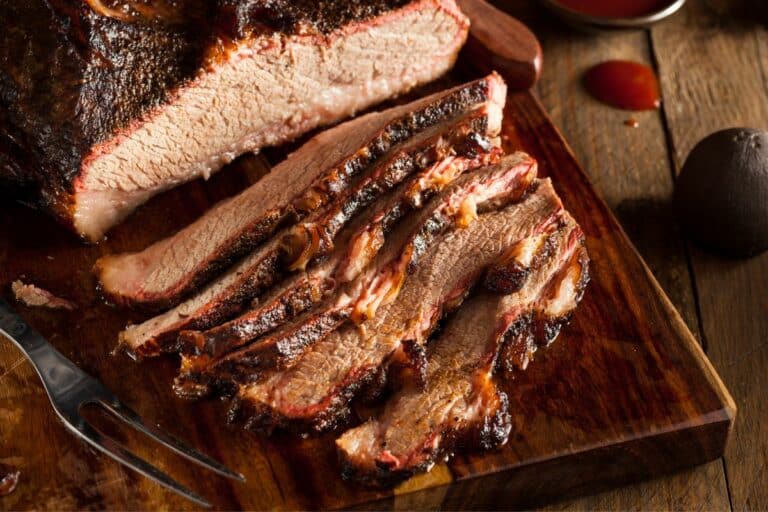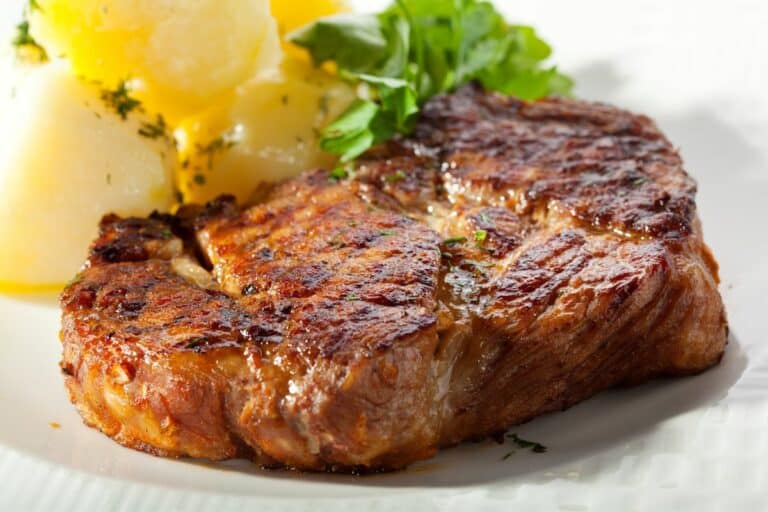From Tokyo Markets to Your Table15 Japanese Eggplant RecipesFamily-Tested & Ready to Master
Unlock the secrets of Japanese eggplant cooking with Oliver, Natalia, and Victor. Inspired by our travels through Tokyo’s Tsukiji markets and refined during our Vietnam residency (2022–present), this advanced guide blends 25+ years of global culinary exploration with family-tested techniques for home cooks and serious food enthusiasts alike.
Why Japanese Eggplant Matters
Hello, culinary explorers! At Visit Da Nang Hoi An Worldwide Travel Guides, Oliver (hospitality veteran with 25+ years across 50+ countries), Natalia (global recipe developer and culinary storyteller), and Victor (born 2016, our 8-year-old food critic) bring you our comprehensive Japanese eggplant guide. During our Vietnam residency (2022–present), we explored Da Nang’s markets, discovered authentic eggplant techniques, and tested recipes that transformed Victor’s palate. This guide, refined through family cooking sessions and informed by chefs in Tokyo, Bangkok, and Ho Chi Minh City, offers practical mastery for home cooks aged 25–65.
Japanese eggplant (Solanum melongena var. serpentinum) represents a culinary treasure often overlooked by Western home cooks. According to Britannica, these delicate vegetables require high-heat cooking to prevent sogginess while maximizing flavor absorption. Our family discoveries—from simple miso dengaku to complex tempura—reveal why Japanese chefs prefer this variety. Explore our Asian Recipe Collection or Vegetarian Cooking Guides for complementary content.
What Is Japanese Eggplant?
Japanese eggplant is a slender, delicate vegetable with thin edible skin and fewer seeds than globe varieties. The name derives from its prevalence in Japanese cuisine dating back centuries. Unlike its larger cousin, Japanese eggplant cooks quickly at high temperatures, creating tender flesh that absorbs sauces beautifully. Our Tokyo market exploration revealed why professional chefs prioritize this variety.
The transformation during cooking takes merely 3–5 minutes at high heat. During this process, the thin skin softens while the interior creams, creating textural contrast that defines classic Japanese dishes. Victor, our 8-year-old taste-tester, loves its subtle sweetness beneath savory applications. (The Daily Meal)
Why Japanese Eggplant Stands Apart
The distinction between Japanese and globe eggplant represents more than size. During our Vietnam residency (2022–present), we conducted side-by-side comparisons, documenting how thin skin and delicate flesh create completely different culinary experiences. This cross-cultural understanding deepened our appreciation for every variety.
Natalia’s experience with Asian vegetable preservation techniques combined with Oliver’s professional hospitality knowledge refined our approach. Cold storage, quick cooking, and proper technique represent humanity’s solutions to ingredient mastery. (The Kitchn)
✨ Thin, Edible Skin
No need to peel! The thin skin holds delicate flesh together and provides beautiful texture during cooking.
⚡ Quick Cooking
Cooks in 3–5 minutes at high heat, perfect for weeknight meals and quick techniques like stir-frying.
🌟 Exceptional Flavor
Sweet, delicate, and less bitter than globe varieties. Absorbs sauces and marinades beautifully.
📺 Video Demo: Master Agebitashi Technique
Before you start cooking, watch this excellent step-by-step demonstration. This video from Namiko Chen (Just One Cookbook) shows authentic agebitashi technique—the “fried and soaked” method that’s fundamental to Japanese cooking. With transparency and complete gratitude, we credit Namiko for this invaluable resource.
⚠️ VIDEO CREDIT & TRANSPARENCY: This video is NOT created by Visit Da Nang Hoi An Worldwide Travel Guides. All credit goes to Namiko Chen (Just One Cookbook). We embed this video as an educational reference because it demonstrates professional Japanese eggplant technique perfectly. Namiko is the creator and copyright holder.
Video by: Namiko Chen – Just One Cookbook
Subscribe to their channel: @JustOneCookbook for expert Japanese cooking tutorials
Full Recipe: Just One Cookbook Website
This video demonstrates the traditional agebitashi technique—”fried and soaked”—where eggplant acts like a sponge, absorbing savory dashi broth. It’s a fundamental method in Japanese cooking.
15 Signature Japanese Eggplant Recipes
These are the family-tested, travel-inspired recipes that have become staples in our home. Each is designed to be quick, easy, and packed with flavor. For more inspiration, check out our complete recipe collection.
1. Nasu Dengaku (Miso-Glazed Japanese Eggplant)
This is the recipe that made Victor fall in love with eggplant during a memorable dinner in Kyoto. The sweet and savory miso glaze caramelizes under the broiler to perfection. According to The Japanese Kitchen, nasu dengaku is one of Japan’s most iconic vegetable dishes.
Ingredients:
- 4 Japanese eggplants
- 2 tbsp white miso paste
- 2 tbsp mirin
- 1 tbsp granulated sugar
- 1 tbsp soy sauce
- 1 tsp sesame seeds for garnish
Our Method:
- Set oven to broil on high, positioning rack about 6 inches from heat source.
- Halve eggplants lengthwise and score the cut flesh in a diamond pattern without piercing the skin.
- Whisk together mirin and sugar until sugar dissolves. Whisk in miso paste and soy sauce until fully combined.
- Brush cut sides lightly with oil and place cut-side down on baking sheet. Broil 5-7 minutes until flesh is tender.
- Remove, flip, and generously brush miso glaze over scored flesh.
- Return to oven and broil 2-3 minutes until glaze is bubbly and caramelized. Garnish with sesame seeds and serve immediately.
Additional 14 Recipes (2-15):
2. Japanese Eggplant “Unagi” — Vegetarian eel-inspired grilled eggplant with savory-sweet glaze and avocado slices
3. Katsu Japanese Eggplant — Crispy panko-coated eggplant rounds, Victor’s favorite “eggplant nuggets”
4. Spicy Mapo Eggplant — Sichuan-inspired with ground pork and chili bean paste from our Thailand years (2010-2022)
5. Eggplant Agebitashi — Fried and soaked in dashi broth (featured in video above)
6. Ginger Pork Rolls — Pork wrapped around eggplant strips, grilled to perfection
7. Japanese Oyaki Dumplings — Buckwheat dough with miso eggplant filling
8. Marinated Teriyaki Eggplant — Quick grilled with homemade teriyaki sauce
9. Stuffed Japanese Eggplant — Filled with walnuts and tamari sauce
10. 15-Minute Eggplant Stir-Fry — Ultimate weeknight warrior recipe with garlic and ginger
11. Refreshing Japanese Eggplant Salad — Light, tangy summer dish with sesame dressing
12. Eggplant & Okra Stir-Fry — Classic home cooking combination perfected through testing
13. Steamed Eggplant with Shrimp — Light, healthy preparation with garlic-soy sauce
14. Grilled Eggplant with Tahini — Japanese-Mediterranean fusion with creamy tahini sauce
15. Crispy Tempura Japanese Eggplant — Light, airy tempura batter, perfectly golden
For complete ingredient lists and detailed instructions for recipes 6-15, visit our recipe archive or explore similar vegetable preparations.
Expert Tips for Cooking Japanese Eggplant Perfectly
After years of working with Japanese eggplant across different cuisines, we’ve learned what works. These tips come from professional chefs, home cooks in Tokyo, and our own family experimentation across continents.
- Don’t Peel the Skin: The thin skin is delicious and helps the eggplant hold its shape during cooking—a critical distinction from globe varieties.
- Use High Heat: To prevent sogginess, cook Japanese eggplant quickly over high heat when stir-frying or grilling. Oliver’s hospitality training emphasizes temperature control.
- Score the Flesh: For recipes like Nasu Dengaku, scoring in a diamond pattern helps cook evenly and absorb more glaze without breaking texture.
- Salt for Frying: Lightly salt and let sit 15 minutes before frying to draw out excess water for crispier results—Natalia’s preservation technique.
- Choose Fresh Eggplant: According to Gardening Know How, fresh Japanese eggplant should be firm with glossy, unblemished skin.
Frequently Asked Questions About Japanese Eggplant
Expert answers from 25+ years in global hospitality and 50+ countries of culinary exploration
What makes Japanese eggplant different from regular eggplant?
Japanese eggplant features a slender shape, thin edible skin, and fewer seeds compared to globe varieties. According to Britannica, these characteristics create a completely different flavor and texture profile. The thin skin requires no peeling and cooks in 3–5 minutes at high heat. (The Daily Meal)
Do you need to peel Japanese eggplant?
No, you do not need to peel Japanese eggplant. The skin is thin, tender, and perfectly edible—which is one of its key advantages over larger varieties. As The Kitchn notes, the skin actually provides important nutritional value and helps hold the delicate flesh together during cooking.
What is the best way to cook Japanese eggplant?
The best way is through high-heat methods like grilling, roasting, or stir-frying. According to The Daily Meal, its thin skin and tender flesh cook quickly and absorb flavors beautifully without becoming bitter or soggy. Quick cooking is the key to maintaining texture.
Is Japanese eggplant healthy?
Yes, Japanese eggplant is genuinely healthy. According to Healthline, eggplant is low in calories, rich in fiber and antioxidants, and supports heart and digestive health through various bioactive compounds.
How do I keep eggplant from getting soggy?
Cook quickly over high heat. Grilling, broiling, or stir-frying are excellent methods. Salt for 15-20 minutes before cooking to draw out excess moisture, recommended by FreshPoint. This technique is critical for maintaining proper texture.
Can I substitute Japanese eggplant with another variety?
Chinese eggplant is the closest substitute with similar thin skin and delicate texture. Italian eggplant works if sliced thinly and salted. However, according to Gardening Know How, Japanese eggplant’s irreplaceable delicate flavor makes a noticeable difference in authentic applications.
Where can I buy Japanese eggplant?
Find at Asian markets, specialty grocery stores, and increasingly at conventional supermarkets. Choose firm specimens with glossy, unblemished skin. Available year-round but peak season is late summer through early fall when flavor is most concentrated.
How do I store Japanese eggplant?
Store in refrigerator crisper drawer up to one week. Keep away from ethylene-producing fruits like apples. Don’t wash until ready to cook. For longer storage, blanch briefly and freeze up to 3 months, following Natalia’s preservation techniques refined over years in multiple climates.
Mastering Japanese Eggplant: Your Culinary Superpower
Japanese eggplant recipes transform dishes with their unmatched delicate magic. Guided by our exploration of Tokyo markets and refined during our Vietnam residency (2022–present), Oliver (hospitality veteran with 25+ years across 50+ countries), Natalia (global recipe developer), and Victor (our 8-year-old taste-tester) share this comprehensive guide. From Thailand (2010–2022) to Vietnam (2022–present), our family’s experiments with eggplant in marinades, stir-fries, and bold dishes continue revealing new applications.
Whether you’re crafting restaurant-quality dishes or simply elevating weeknight meals, Japanese eggplant deserves a permanent place in your vegetable rotation. Start with simple miso dengaku for delicate applications, explore complex stir-fries for bold projects, and taste your way to mastery. Share your creations with #VisitDaNangHoiAn. Happy cooking!
Explore more inspiration from our guides:





